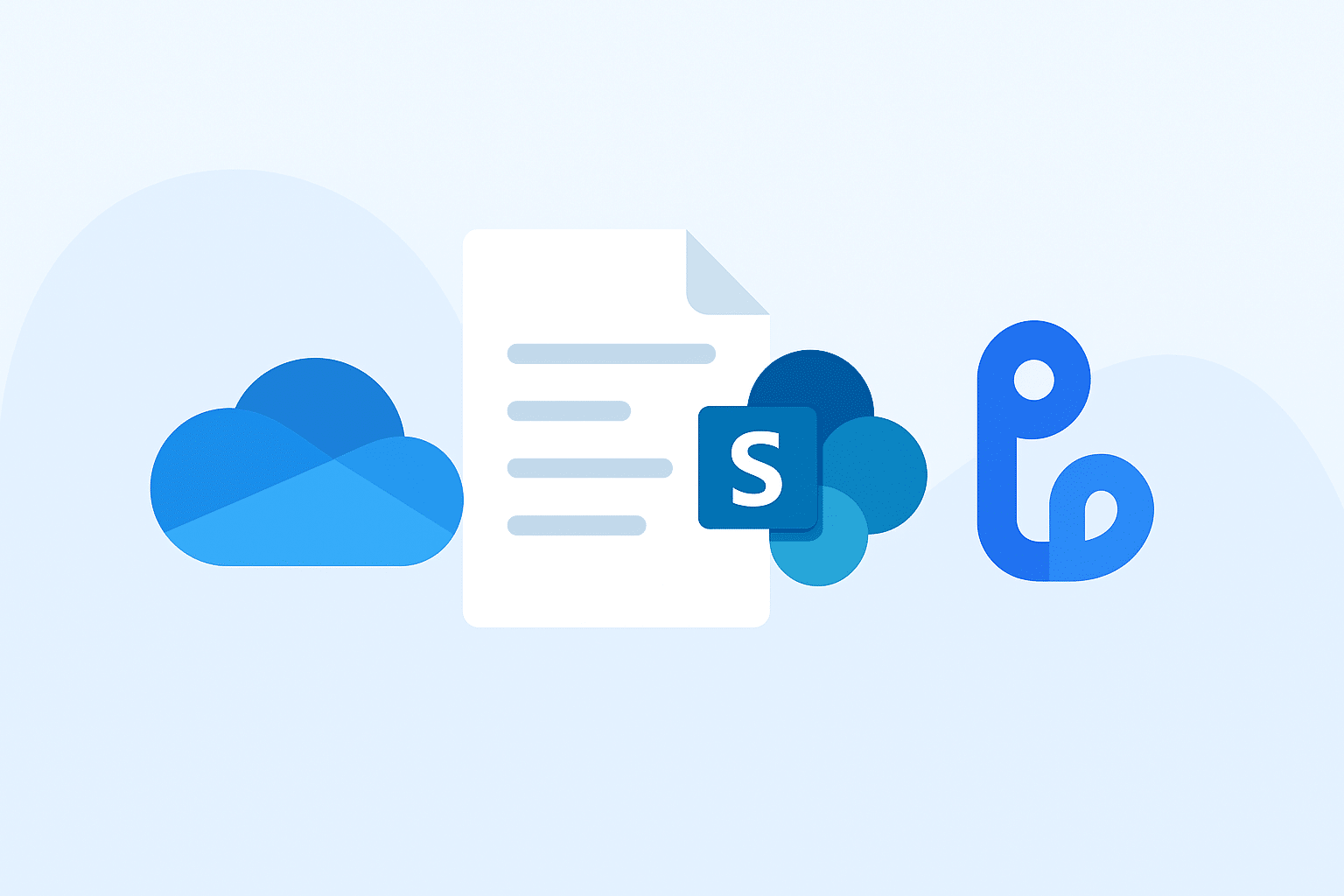
Microsoft Security Copilot
Is it the future of security operations or is it still mostly marketing hype?
AI in cybersecurity has been the buzzword of 2025, and at the centre of the conversation sits Microsoft Security Copilot, Microsoft’s generative AI-driven assistant designed to help security teams detect, investigate, and respond to threats faster.
It’s built on GPT-4, Microsoft Defender XDR, and Microsoft’s global threat intelligence (from over 65 trillion daily signals across Microsoft 365, Azure, and Windows). The result? An AI system that promises to make every analyst as effective as your best one.
But the million-dollar question remains:
Is this the future of security operations, or is it still mostly marketing hype?
Let’s unpack what’s real, what’s overhyped, and what’s still to come.
What Microsoft Security Copilot Actually Is
At its core, Security Copilot is a chat-based interface for security operations that sits across Microsoft’s existing security ecosystem, including:
- Microsoft Defender XDR
- Microsoft Sentinel (SIEM)
- Microsoft Entra (Identity)
- Microsoft Purview (Compliance & DLP)
It uses these data sources to interpret natural language questions and produce actionable answers, summaries, and recommendations.
For example, you can ask:
“Summarise incidents involving suspicious PowerShell activity in the last 24 hours.”
“Which devices are associated with this user’s compromised credentials?”
“Show me the MITRE ATT&CK techniques used in this incident.”
Instead of searching across portals and dashboards, Copilot brings together cross-product context — instantly.
Where Security Copilot Delivers Real Value
- Incident Response at Machine Speed
The biggest tangible gain is in response time.
In traditional SOC operations, analysts waste hours correlating alerts across multiple portals (Sentinel, Defender, Intune, etc.). Copilot automates this by creating attack stories that connect incidents across systems.
Analysts can then use natural prompts like:
“Explain this incident and list containment actions.”
This saves valuable triage time and shortens response time, especially useful for lean IT teams without 24/7 SOC coverage.
- Empowering the ‘Tier 1.5 Analyst’
Security Copilot acts as a digital mentor.
For teams with junior analysts or IT generalists, it explains context that would otherwise require senior expertise.
Example:
“Explain what the Mimikatz tool does.”
“How does this PowerShell command indicate credential theft?”
By translating complex telemetry into human-readable insight, it accelerates learning and improves accuracy.
It’s not replacing people, it’s raising their floor.
- Unified Context Across Microsoft Security Stack
The magic lies in Copilot’s cross-domain correlation. It combines:
- Endpoint signals (Defender for Endpoint)
- Email data (Defender for Office 365)
- Cloud app behaviour (Defender for Cloud Apps)
- Identity and access logs (Entra ID)
- SIEM/SOAR events (Sentinel)
This end-to-end view means you’re not chasing disjointed alerts anymore, you’re looking at the full kill chain, mapped against MITRE ATT&CK techniques with supporting evidence.
- Reducing Cognitive Load
Security operations are noisy.
Copilot reduces analyst burnout by:
- Automatically summarising long incident timelines
- Prioritising by risk and business impact
- Highlighting the next recommended actions
In short: it transforms raw data into narrative intelligence that’s easy to digest and easy to act on.
The Hype — Where It Falls Short (For Now)
- It’s a Copilot, Not an Autopilot
Despite the name, Security Copilot doesn’t make decisions for you. It doesn’t react.
It won’t automatically isolate devices, disable accounts, or apply new policies.
Humans are still responsible for verification and execution.
Relying solely on Copilot for automated defence would be risky. Think of it as a co-pilot monitoring the radar, not the one flying the plane.
- Quality Depends on Your Configuration
Copilot’s accuracy is directly tied to your security posture maturity.
If Defender isn’t fully onboarded, devices aren’t reporting, or Sentinel isn’t connected — Copilot’s insights will be incomplete or misleading.
Garbage in = garbage out. To get real value, organisations need:
- Unified logging and telemetry
- Consistent device onboarding
- Clear incident tagging and labelling
- Defender and Sentinel tuned properly
- Privacy & Governance Considerations
Security Copilot uses your organisation’s data, which could be potentially sensitive, to generate context. That means:
- Role-based access control (RBAC) is essential
- Governance over prompt content must be established
- Sensitive prompts (e.g., “summarise all incidents involving [CEO’s name]”) should be audited
Microsoft has implemented no data leakage guarantees, meaning your data isn’t used to train the underlying model, but internal governance is still a must.
- Limited Outside the Microsoft Ecosystem
At launch, Copilot’s value is greatest for organisations deeply invested in the Microsoft stack. If you’re using Palo Alto, CrowdStrike, or Okta for major workloads — integration is still limited. However, Microsoft has announced third-party API support via Security Copilot extensibility framework, so expect broader coverage over time.
Real-World Use Cases Emerging from Early Adopters
- Rapid Incident Summaries for Executives
Generate easy-to-read summaries for management without analyst rewriting time.
“Write an executive summary of the phishing attack on 20 Oct.”
- Accelerated Threat Hunting
Combine Sentinel KQL queries with AI-driven correlation.
“List all devices communicating with known C2 domains.”
- Post-Incident Reporting
Copilot can automatically generate post-incident documentation including scope, timeline, MITRE mapping, and recommended remediations.
- Analyst Coaching
Copilot can act as a built-in mentor:
“What should I do next after isolating a compromised host?”
What You Need Before Rolling It Out
Before jumping in, make sure your Microsoft security foundation is solid. Here’s what matters and why:
-
Entra ID Conditional Access & MFA
- Identity is the new perimeter — AI insights depend on clean access logs.
-
Microsoft Defender XDR configured
- Provides the primary telemetry Copilot uses.
-
Microsoft Sentinel connected
- Enables cross-domain correlation and automation.
-
Incident response playbooks
- Copilot can summarize or trigger these, but you must define them.
-
Data governance policies
- Ensures Copilot output aligns with compliance requirements.
The Real ROI
Early adopter studies suggest Security Copilot reduces:
- Investigation time by up to 40–60%
- Training time for junior analysts by up to 50%
- Time to resolution (TTR) in SOC workflows significantly
But the biggest ROI is confidence and clarity.
Teams spend less time hunting and more time acting with certainty.
What’s Next for Security Copilot
Microsoft is integrating Security Copilot directly into:
- Microsoft Defender XDR interface
- Microsoft Sentinel
- Intune and Endpoint Manager
- Entra Admin Center
Expect more “Copilot-in-the-flow” experiences where analysts don’t need to open a separate chat pane. AI assistance will appear contextually within existing dashboards. Longer term, Microsoft is building towards a unified Copilot for security, compliance, and IT operations, blurring the line between detection and prevention.
In Summary
Microsoft Security Copilot won’t make you secure, it will make your security team smarter, faster, and more effective. It’s a multiplier, not a miracle.
Those who see it as a strategic enabler and prepare their environment accordingly will extract enormous value. Those who treat it as a “set-and-forget” AI assistant will be disappointed.
If your Microsoft security foundation is strong, Copilot can elevate your SOC maturity almost overnight. If it isn’t, Copilot will only highlight the gaps you already have.
Reality:
- AI-accelerated triage, correlation, and reporting
- Natural language interface for Defender/Sentinel
- Improved productivity & consistency
- Data privacy and compliance-aware
Hype:
- “AI replaces analysts”
- Fully autonomous security
- Instant security transformation
- “Risk-free AI”
How can we help?
Security Copilot is not an AI product you buy, it’s a capability you operationalise. With the right preparation and partner guidance, it becomes a force multiplier for your security posture. Without that, it risks becoming just another unused Microsoft feature. With the right preparation and partner guidance, it becomes a force multiplier for your security posture. Without that, it risks becoming just another unused Microsoft feature.
If you’re beginning your Copilot security journey or want to get more out of your existing Microsoft investments, we work with organisations to:
- Build the technical foundations that Copilot needs
- Accelerate adoption through real-world operational use cases
- Train teams to get value from day one
Want tailored advice for your security strategy?
If you’re beginning your Copilot security journey or want to get more out of your existing Microsoft investments, Applicable helps you maximise your return on investment across Microsoft 365 and Security Copilot. Get in touch to speak with our experts. available face-to-face or online.


